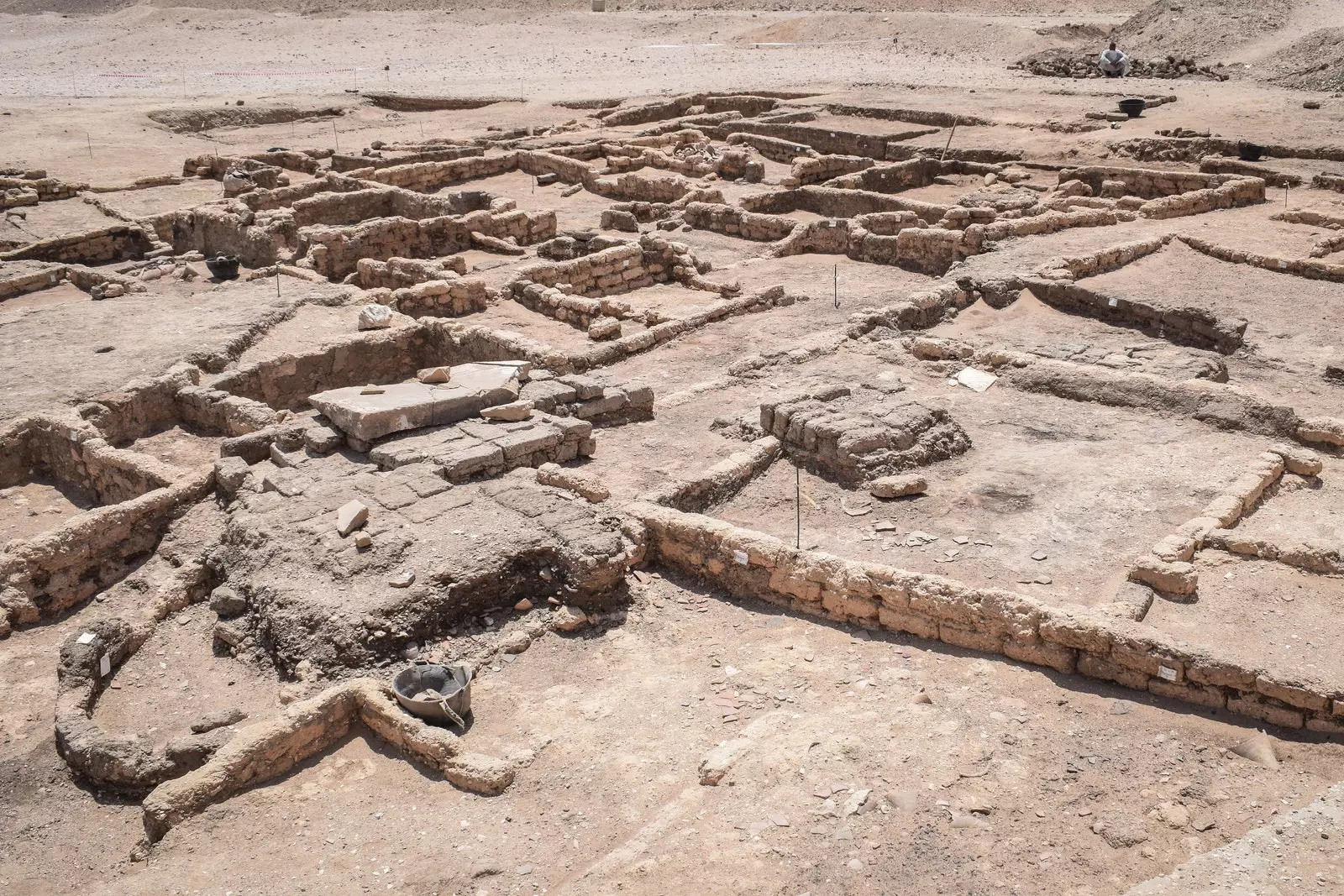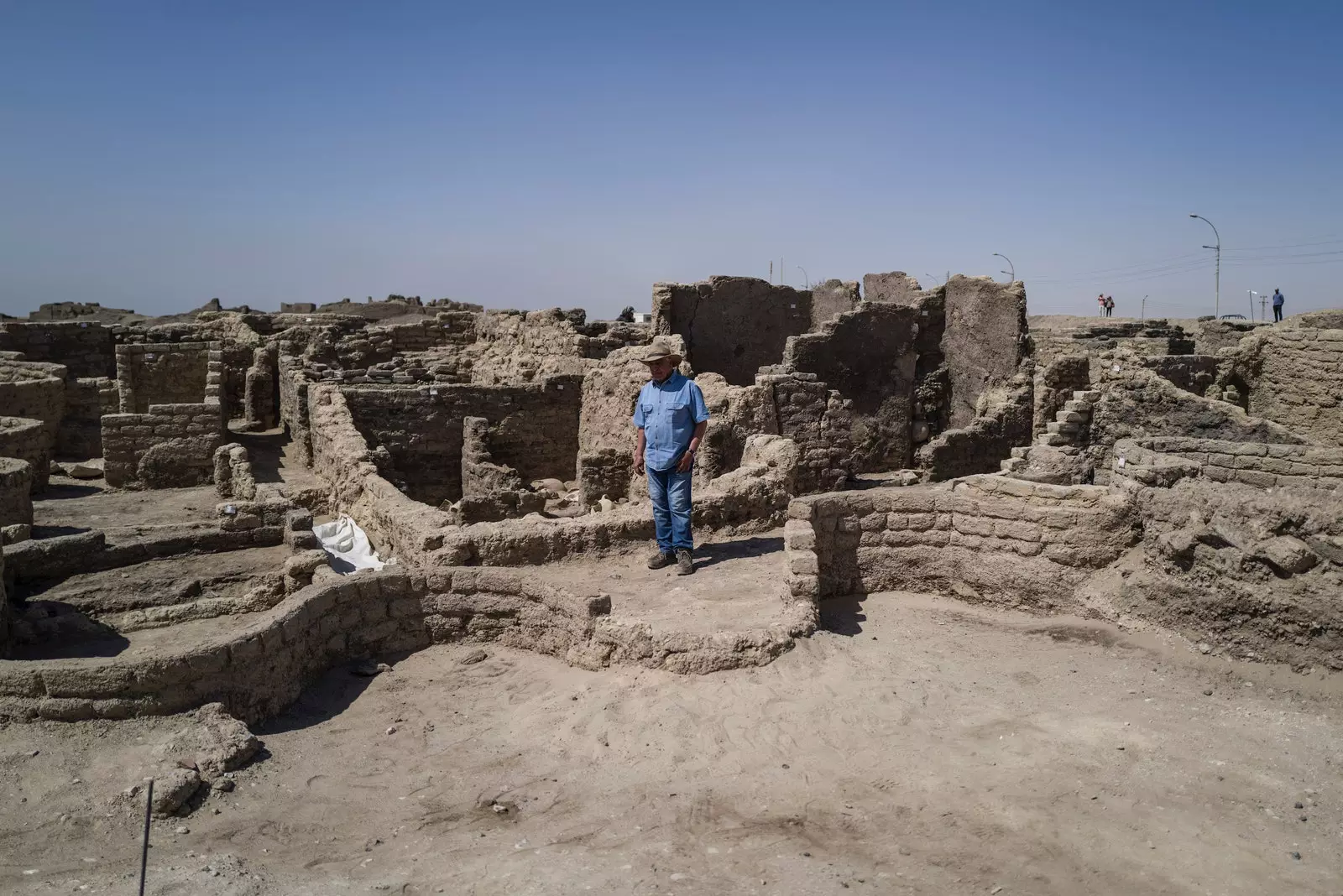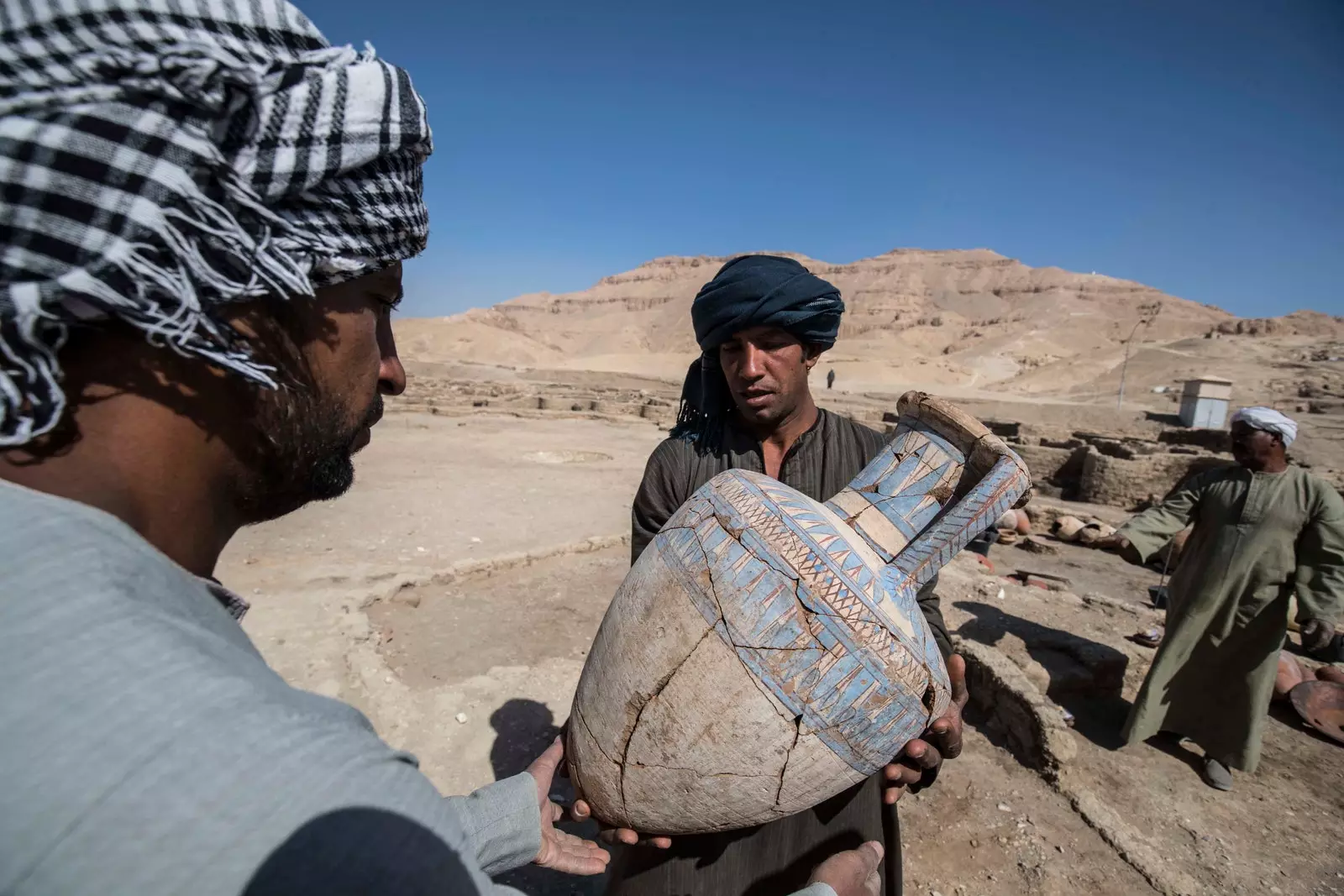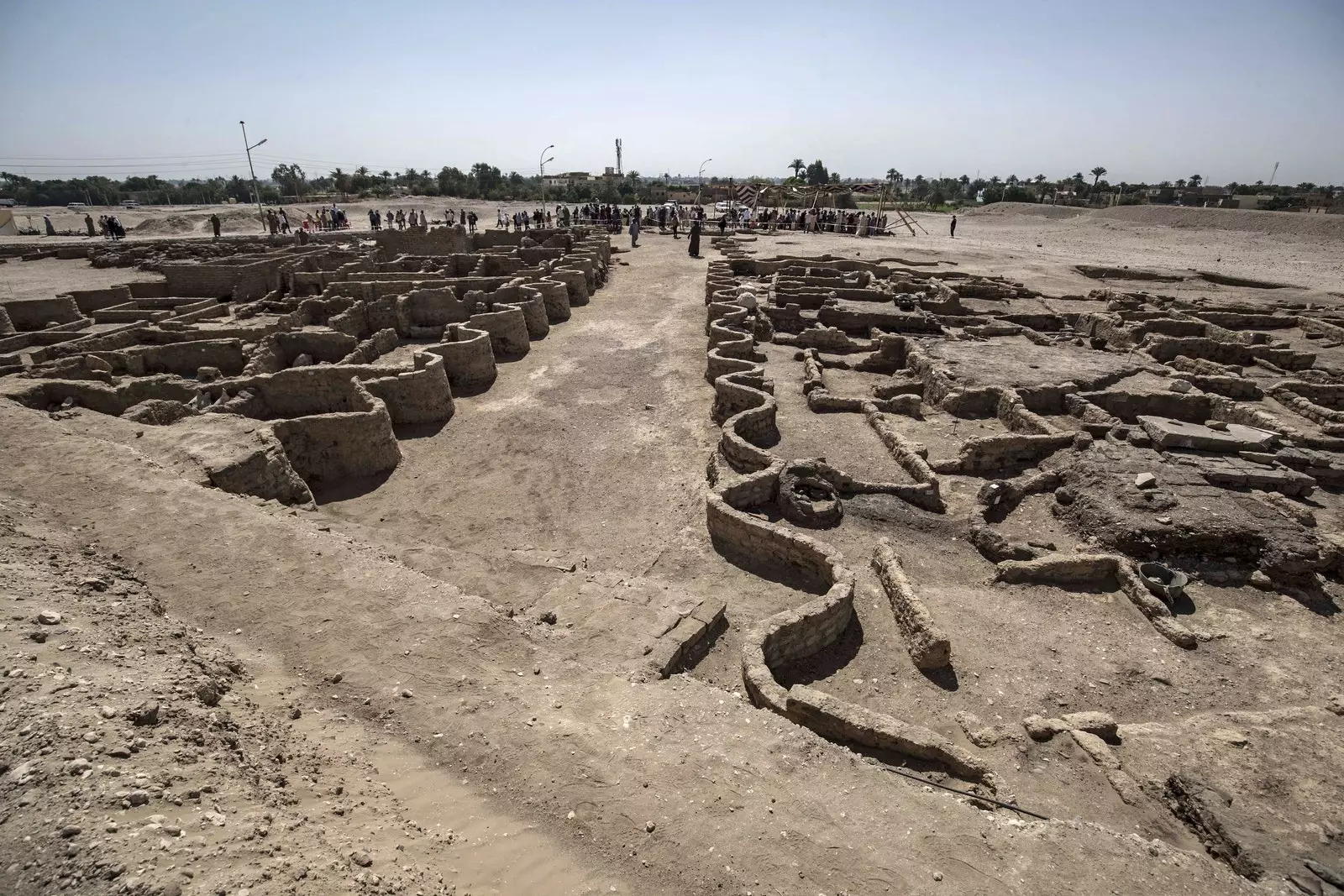
The dazzling discovery of the lost city of Luxor (Egypt)
The recent findings announced by the renowned Egyptologist Zahi Hawass and the Egyptian Ministry of Tourism and Antiquities Last Thursday, April 8, they place us before the dazzling discovery of the 'Lost Golden City' in Luxor . popularly known as 'Atten' , the city dates back to the reign of Amenhotep III and has a fascinating 3,000 years of history.
The Egyptian mission commanded by the Dr Zahi Hawass found the lost city under the sands of Egypt and decided to name it "The rise of Aten". “Many foreign missions searched for this city and never found it. . We started our work by searching for the mortuary temple of Tutankhamun, because the temples of pharaohs Horemheb and Ay were found in this area," Zahi Hawass said in the official statement.

Zahi Hawass in front of the Lost City of Luxor
Within a few weeks of starting the excavations on the west bank of Luxor – some 500 kilometers south of Cairo – in September 2020, the group of Egyptian archaeologists came across a series of mud brick formations, which led them to unravel a "big city in good condition" , with almost complete walls and with rooms full of tools that were used at that time during daily life.
THE FINDING OF THE LOST CITY OF LUXOR
Founded during the reign of Amenhotep III , the ninth king of the 18th dynasty who ruled Egypt from 1391 to 1353 BC, the golden city had become the largest administrative and industrial settlement of the Egyptian empire era on the west bank of Luxor.
Amenhotep III, for his part, led a period of peaceful prosperity, devoting himself to enriching diplomatic contacts and erecting extensive works in Egypt and Nubia. The king built the main parts of the Luxor temple and a pylon at the Karnak temple, both in ancient Thebes, as well as a host of other structures at Memphis.
Great finds such as rings, scarabs, colored ceramic pots, mud bricks with seals from the King Amenhotep III and hieroglyphic inscriptions found on clay lids of wine vessels, contributed to validate the archaeological dating of the city.

Some of the objects found in the Lost City of Luxor
The archaeological mission found a bakery, an area for cooking and preparing food , with large storage kilns and ceramics in the southern part; the second area is still partially covered, but it would be the administrative and residential district, with larger and well-ordered units.
The administrative and residential area stands out for being surrounded by a zigzag wall, with a single access point that leads to internal corridors and areas of a residential nature, which made archaeologists think that it acted as security, with the ability to control the entry and exit to closed areas.
The zigzag walls constitute one of the strangest elements in ancient egyptian architecture , mainly used towards the end of the 18th dynasty; and the group of tombs of different sizes that can be reached via rock-cut stairs, form a common feature of tomb construction in the Valley of the Kings and the Valley of the Nobles.

The zigzag walls of the 'Lost City of Luxor'
The production area of the mud bricks that they were used to build temples and annexes , as well as a multitude of foundry molds for the elaboration of amulets and delicate decorative elements, are proof that the city manufactured decorations for both temples and tombs.
"The discovery of this lost city is the second most important archaeological discovery since the tomb of Tutankhamun" , he claimed Betsy Bryan, professor of Egyptology at John Hopkins University in Baltimore, United States , who also pointed out that the finding will provide "a rare insight into the life of the ancient Egyptians at a time when the Empire was richest , as well as helping to establish clarity about one of the greatest mysteries in history: why did Akhenaten and Nefertiti decide to move to Amarna?
The truly amazing thing is that the archaeological layers have remained intact for thousands of years, abandoned by the former residents as if it were yesterday. "Work is underway and the mission hopes to uncover intact tombs full of treasure" , concludes Dr. Zahi Hawass.
